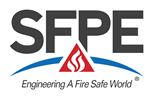FEMTC 2014
Influence of Input Parameters on the Fire Simulation 
Corinna Trettin - University of Wuppertal
Abstract
The use of computational fluid dynamics in fire safety engineering requires the applicability of the employed model according to a specific fire scenario.
To be able to estimate how the simulation outcome is influenced by model assumptions and simplifications, the user has to evaluate the dominating physical processes and involved empirical parameter that has an essential influence on the specific fire scenario.
Thermogravimetric analysis (TGA) will be used to show in which ranges the input parameters (T,Reaction Rate, Pyrolysis Range, Heating Rate…etc.) in a fire simulation with the “Fire Dynamics Simulator” will vary based on the measurement errors, measurement uncertainty, or misinterpretation of the user. The impact of those variant input parameters on the simulation of one specific fire scenario will be evaluated and will be discussed.
Additionally, the influence of model assumptions (e.g. SOLID_PHASE_ONLY=.TRUE.) to validate the TGA together with fixed material properties on the simulation result will be carved out.
To calculate the fire spread in a simulation, chemical and thermal material properties are analyzed by the use of the Cone Calorimeter and TGA in their different laboratory scales.
Additionally to the measurement conditions and model assumptions, the user has to evaluate the material properties for simulation input according to their specific laboratory scale compared to the specific fire scenario that should be simulated. For this purpose, different virtual scales are used to discuss the influence on the simulation of the Fire Dynamics Simulator.
Presentation
Resources
| Paper | Presentation | ||
|---|---|---|---|
| HTML | HTML | ||
| Resources Archive File (.zip) | |||

